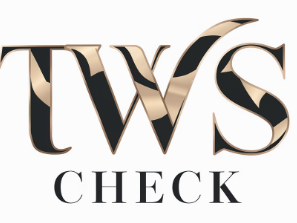Digital Lending and Market Dynamics: An Insightful Exploration
The journey of lending has evolved significantly, from the primitive practices in Ancient Mesopotamia and Greece, where interest rates began to shape the dynamics of loans, to the introduction of universal credit cards in the 20th century. Today, the digital lending market is experiencing exponential growth, projected to reach USD 20.5 billion by 2026, fueled by advancements in technology such as data analytics and credit scoring.
This seismic shift is underscored by an increasing reliance on smartphones, digitalization, and the need for streamlined customer experiences, setting a new stage for interest rates management, credit scoring precision, and innovative financial products in the digital era .
Evolution of Online Lending
Early Beginnings and Growth
- Initiation of Peer-to-Peer Platforms: The concept of online lending platforms began in the early 2000s, marked by the emergence of peer-to-peer (P2P) lending platforms . Zopa, launched in 2005 in the UK, pioneered this model. Soon after, Prosper Marketplace in the United States followed, starting its operations in 2006.
- Expansion During Financial Crisis: The 2008 financial crisis played a significant role in the growth of online lending platforms as traditional banks tightened their lending standards. This period saw a notable increase in the acceptance and use of online platforms for lending purposes.
Significant Developments and Technological Integration
- Public Listing and Market Growth: LendingClub’s move to go public in 2014 marked a significant milestone, being the first P2P lender to do so, which helped garner widespread attention and credibility towards online lending platforms.
- Technological Advancements: The evolution of digital lending saw significant advancements with the introduction of technologies like remote online notary (RON) and eSignature to enhance the customer experience and streamline processes.
Modern Era and the Role of Mobile Technology
- Rise of Mobile Lending Apps: By the late 2000s, the proliferation of smartphones led to the development of mobile lending apps, allowing borrowers to apply for loans and manage their accounts directly from their mobile devices, further simplifying the lending process.
- Fintech Revolution: The term “fintech” became popular in 2015, encapsulating the blend of technology and financial services and highlighting the sector’s growth, including digital lending platforms.
Impact of External Factors on Digital Lending
- Influence of Global Events: The Global Financial Crisis of 2008 and the COVID-19 pandemic significantly influenced the digital lending landscape, with the latter accelerating the shift towards digital financial services and highlighting the importance of digital lending in economic recovery.
Current Trends and Future Projections
- Advancements in AI and Machine Learning: Recent years have seen artificial intelligence and machine learning increasingly being used to enhance credit scoring and risk assessment in digital lending, promising more efficient and accurate financial services.
- Market Growth Projections: The digital lending market is expected to grow significantly, projected to reach USD 20.5 billion by 2026, with a compound annual growth rate (CAGR) of 13.8% from 2021.
Integration and Challenges
- Challenges in Integration: Despite the advancements, digital lending platforms face challenges such as integration issues, where different components within the system need to communicate effectively to provide a holistic view of a customer’s credit profile, which is crucial for lenders to make informed decisions.
Impact of AI and Machine Learning
AI-Driven Credit Scoring and Loan Processing
- AI in Credit Scoring: AI and machine learning algorithms are utilized to assess creditworthiness by analyzing an applicant’s digital footprint, search history, and social media activities when traditional credit scores are unavailable.
- Loan Processing Efficiency: Machine learning technologies streamline the loan origination process by reducing errors and accelerating approval times, thus enhancing operational efficiency in financial institutions .
Risk Management and Customer Acquisition
- Enhancing Risk Procedures: AI significantly improves risk management strategies by swiftly evaluating the credit and risk profiles of loan applicants, which aids in making informed lending decisions.
- Client Acquisition: Through AI algorithms, financial institutions can optimize loan application and payout processes, thereby improving customer acquisition rates.
AI’s Role in Data Analysis and Decision-Making
- Data Handling and Analysis: AI technologies process large volumes of data, minimizing human bias and enabling efficient application processing. They also employ AI-powered chatbots for dynamic customer engagement .
- Decision-Making Efficiency: AI-powered platforms use machine learning to assess various factors like creditworthiness and risk, thereby expediting the loan application process and improving accuracy in decision-making.
Advancements and Challenges in AI Lending
- Future Prospects: Advancements in AI are projected to further refine data analysis, risk assessment, and credit decision-making processes in the financial sector.
- Challenges in AI Applications: Despite the benefits, AI in lending faces challenges such as potential biases in algorithms, issues with transparency, and the need for handling outliers and regulatory concerns.
Current Utilizations and Trends
- Broad Applications: Current uses of AI in lending include enhancing the accuracy of credit scoring, automating processes, and expanding access to funding through innovative, fair loan approval processes.
- Digital and Personalized Lending: With the rise of digital platforms, borrowers enjoy the convenience of applying for loans online, complemented by personalized services facilitated by AI, such as e-signatures and digital document processing .
Challenges and Regulatory Considerations
Regulatory Landscape
- Comprehensive Regulations: Digital lending is governed by numerous regulations including GDPR, PCI DSS, PSD2, KYC, AML, EIDAS, HIPAA, FISMA, GLBA, and SOX, which ensure data protection, privacy, and secure financial transactions.
- Adaptation to Regulations: Digital lending platforms must continually adapt to comply with these evolving regulations, which cover a broad spectrum of operational and security aspects .
Barriers to Adoption
- Operational Challenges: Digital lenders often face hurdles such as slow processing times, poor user experiences, and lack of data-driven methodologies which can hinder the efficiency of services.
- Infrastructure Limitations: In many underdeveloped countries, the lack of digital literacy and inadequate network connectivity pose significant challenges to the adoption of digital lending solutions.
Data Security Concerns
- Cybersecurity Risks: With the rise in cyber-attacks, maintaining data security and privacy is paramount. Financial institutions must invest in advanced security protocols to safeguard consumer data.
- Regulatory Compliance: Ensuring compliance with data protection laws is crucial to prevent data breaches and protect sensitive customer information.
Digital Credit Regulatory Challenges
- Regulatory Overlaps and Gaps: Digital credit products often fall under multiple regulatory bodies, creating a complex environment that can lead to overlaps and gaps in consumer protection .
- Systemic Risk Regulations: Regulations aim to prevent systemic risks but must be balanced to avoid stifling innovation or limiting the funds available for lending .
Compliance and Market Conduct
- Ensuring Compliance: Digital lenders must navigate a maze of laws and guidelines to maintain transparency and responsibility in lending practices.
- Market Conduct Regulations: These regulations are designed to protect consumers from unfair practices by mandating clear disclosure of product terms and managing privacy concerns .
Innovations and Regulatory Sandboxes
- Regulatory Sandboxes: These frameworks allow fintech companies to test new products under relaxed regulations, fostering innovation while managing risks.
- License and Reporting Requirements: Regulators have set specific licensing and reporting standards to monitor and control digital lending activities effectively.
Addressing the Challenges
- Consumer Protection: Enhanced consumer protection measures are necessary to address the risks associated with digital lending and build trust among users.
- Regulatory Evolution: As the digital lending landscape evolves, so must the regulatory frameworks, which should be flexible enough to accommodate new technologies and business models.
Conclusion
Throughout the exploration of digital lending and its profound impact on market dynamics, we’ve seen the shift from traditional lending practices to the innovative, technology-driven mechanisms of today. This evolution, marked by the introduction of peer-to-peer platforms, the integration of advanced technologies like AI and machine learning, and the uptake of mobile lending apps, has revolutionized how financial services are delivered and consumed. These developments not only enhance the efficiency and accuracy of credit scoring and loan processing but also promise a future where financial inclusion and access to credit are significantly improved. Yet, challenges such as regulatory compliance, data security, and the need for continual technological advancements loom large, underscoring the complex landscape of digital lending.
The significance of digital lending in the current era cannot be overstated, with implications ranging from economic recovery post-global crises to the democratization of financial services. As we navigate the complexities of integrating new technologies and adhering to evolving regulatory standards, the potential for fostering a more inclusive financial ecosystem grows. Moving forward, the focus must remain on leveraging technology to address these challenges, improve consumer protections, and ensure that the promising growth of the digital lending market continues unabated. In doing so, we embrace a future where efficient, equitable, and accessible financial services are not just an aspiration but a reality.
FAQs
What are the key advantages of digital lending? Digital lending offers the key advantage of instant online approval, setting it apart from the traditional loan approval process. This modern approach eliminates the lengthy and manual verification steps, allowing for quick and efficient decisions on personal loan applications.
How is the digital lending market defined? The digital lending market refers to the provision of credit via online platforms, which sidesteps the conventional banking intermediaries. These platforms enable borrowers to obtain loans with fewer hurdles, such as rigorous creditworthiness evaluations and the need for extensive documentation.
Can you explain the role and services of Lentra in the digital lending space? Lentra provides a comprehensive lending platform equipped with all the necessary tools, features, and integrations for a seamless lending process. This includes everything from KYC and compliance to onboarding, servicing, collections, and more. While each product on the platform is powerful on its own, addressing credit risk, decisioning, and management, they are most effective when used in conjunction.
What constitutes a digital lending model? A digital lending model is essentially a system that allows individuals to borrow money through online platforms rather than traditional banking institutions. It is known for its speed, convenience, and constant availability, making it an attractive option for borrowers.









